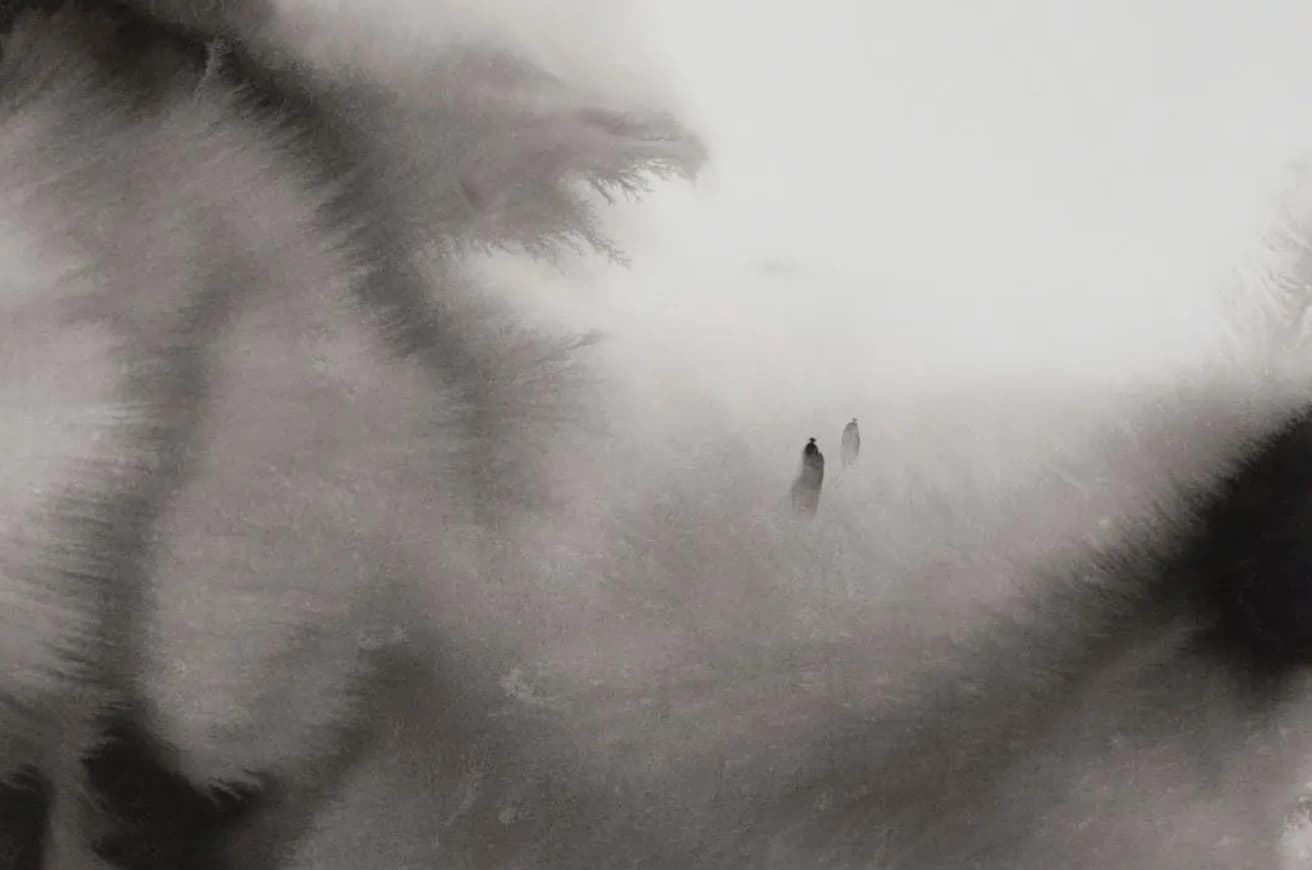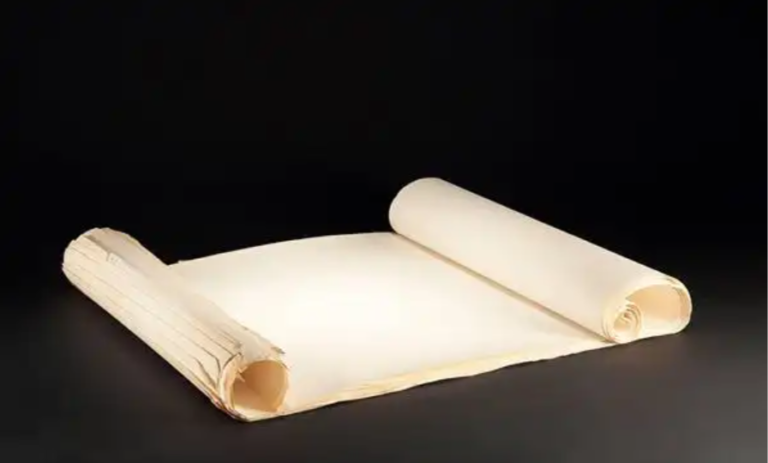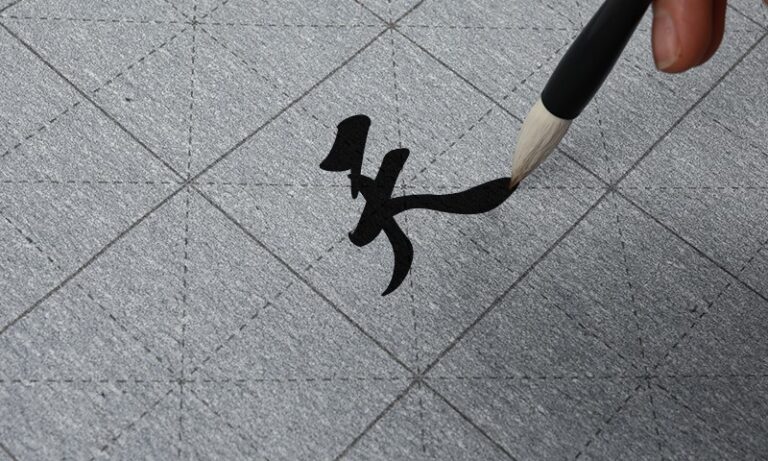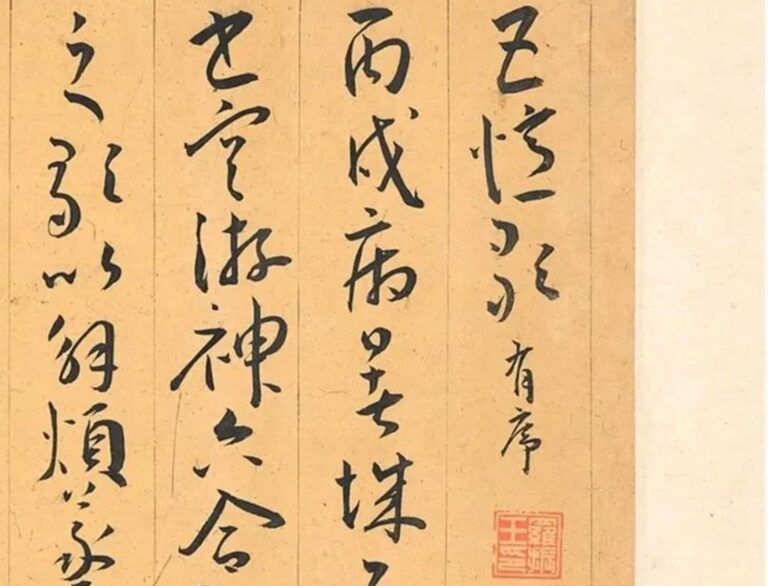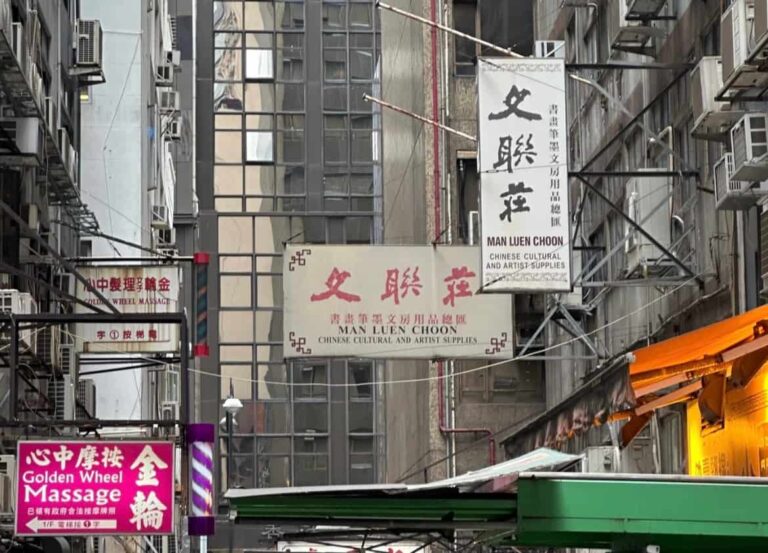How to Prevent Ink Bleeding When Writing Chinese Calligraphy on Xuan Paper
A calligraphy student preparing for an exam once asked me for help with a common and frustrating problem: ink bleeding on Xuan paper. Realizing that many artists, both new and experienced, struggle with this, I decided to create a comprehensive guide based on my own experience and tips from the wider calligraphy community.
Ink bleeding on Xuan paper is usually caused by a combination of factors, including the paper itself, the thickness of your ink, the speed of your brush, and how much ink you load onto it. Let’s break down each one.
1. Your Paper Matters Most: To prevent ink bleeding, choose the right Xuan paper.
If your ink is bleeding a lot, the first thing to check is your paper. You might want to switch to a semi-sized or fully-sized Xuan paper. (Note: When we say “Xuan paper” here, we’re using it as a general term for calligraphy paper, not just the famous kind from Jing County, Anhui.)
In terms of how they handle ink, papers are generally sorted into three types:
- Sheng Xuan (Raw/Unsized Paper): This paper is highly absorbent, which allows skilled artists to create beautiful, nuanced ink washes and effects. However, for beginners, its absorbency can be very difficult to control, often leading to messy bleeding.
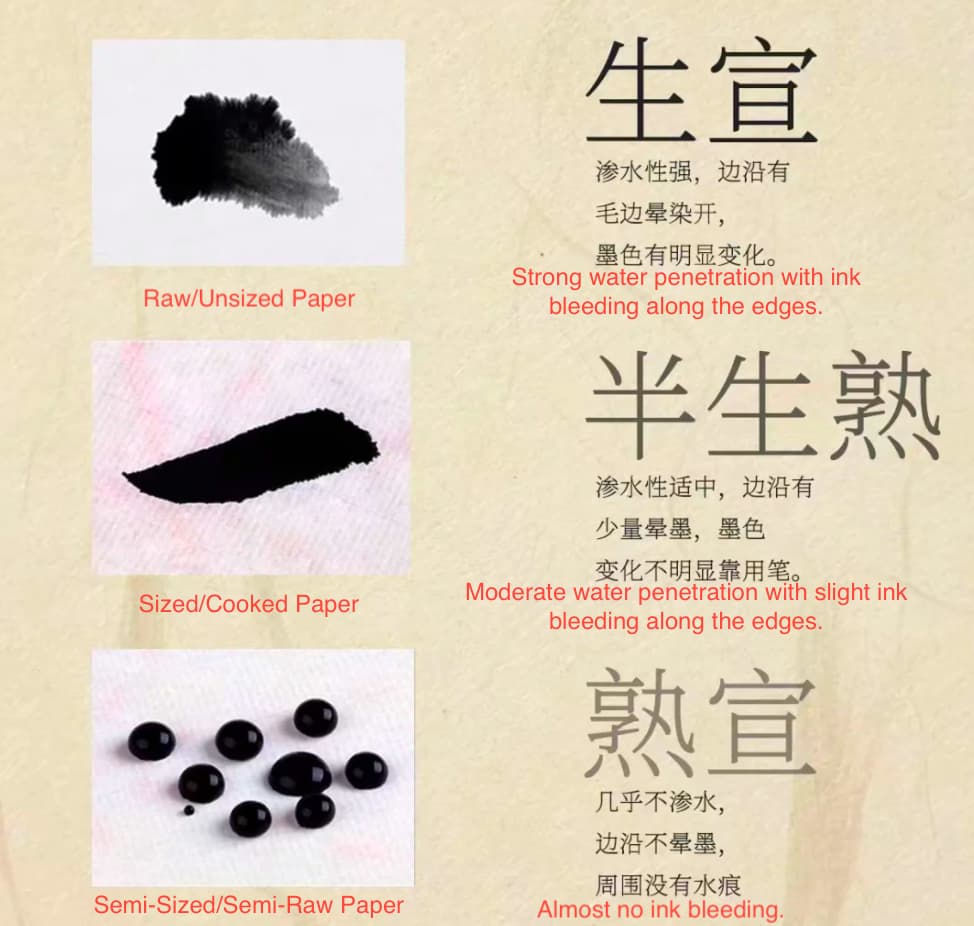
This image shows the differences between raw Xuan, sized Xuan, and semi-sized Xuan paper after ink application.
- Shu Xuan (Sized/Cooked Paper): This is raw paper that has been treated with an alum solution, which makes it harder and much less absorbent. When you write on it, the ink sits on the surface and doesn’t spread. You might think this prevents you from creating those rich, “wet ink” effects, and you’d be right. But let’s be honest, for most beginners, mastering advanced ink techniques isn’t the priority. You should first focus on the fundamentals: character structure, brushwork, and overall composition.If you want to avoid ink bleeding completely, I highly recommend using fully sized paper. It’s also the standard choice for “Gongbi” (meticulous-style) painting and for practicing small regular script (小楷), as it allows you to create incredibly fine and precise strokes.
- Ban Shu Xuan (Semi-Sized/Semi-Raw Paper): As the name suggests, this paper is a middle ground between raw and sized paper. It has a moderate level of absorbency. “Yu Ban Xuan” is a well-known example of this type.
Personally, I often prefer using pure handmade Mao Bian Paper, which is typically semi-sized (what I call seven or eight-tenths sized). Under normal circumstances, it doesn’t bleed.

This is the Cicada Wing Mao Bian Paper from Qi Ming Wen Fang, a high-quality handmade bamboo paper.
Here’s a photo from a customer who bought our Cicada Wing Mao Bian Paper. They intentionally splashed water on it, and as you can see, the ink held its shape without bleeding.
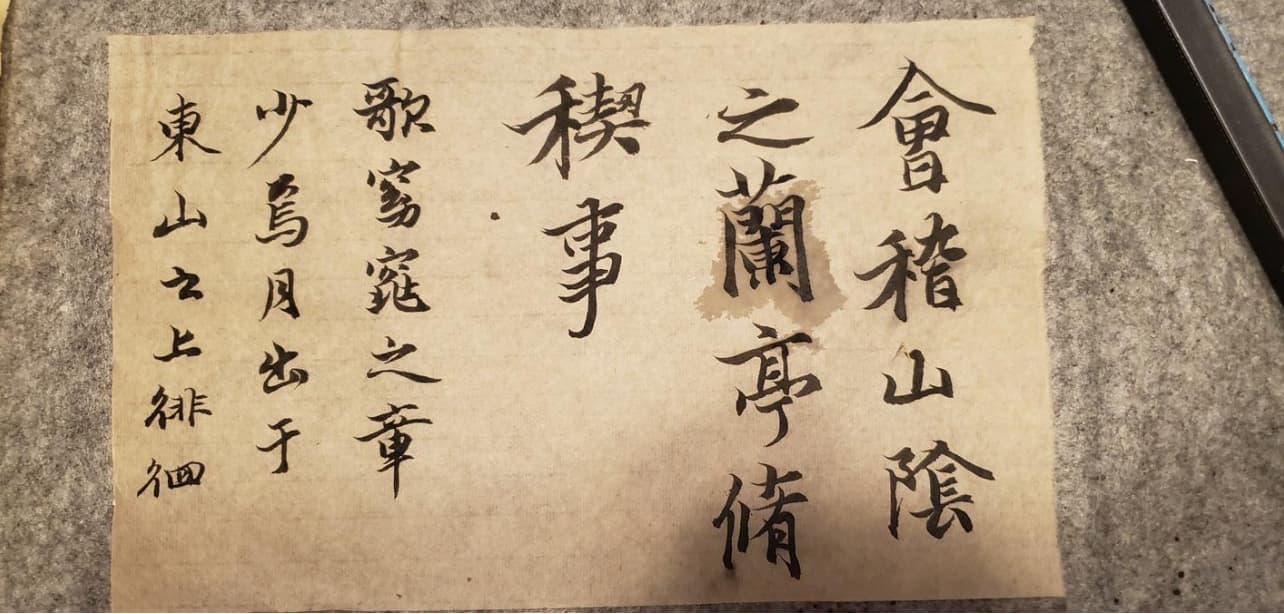
This is the machine-made Cicada Wing Mao Bian Paper from Qi Ming Wen Fang, a fully sized bamboo paper that is also excellent for practice.
2. Check Your Ink: Adjusting the Consistency
If your ink is spreading too quickly, it’s likely too thin. Try making it thicker by adding less water. A good way to test it is to put a small dot of ink on a corner of your paper.
- If the dot bleeds quickly and widely, your ink is still too watery. Add a little more ink from the bottle to thicken it.
- If the dot barely bleeds at all, it might be too thick. You can thin it by adding a tiny bit of water.
When adding water, it’s best to do it carefully. Traditional calligraphers used a Yandi (砚滴), also known as a water dropper, or a small spoon from a Shuiyu (水盂), a water pot. Today, I see some people use a syringe. While it might not be as elegant as the traditional method, it certainly gets the job done.
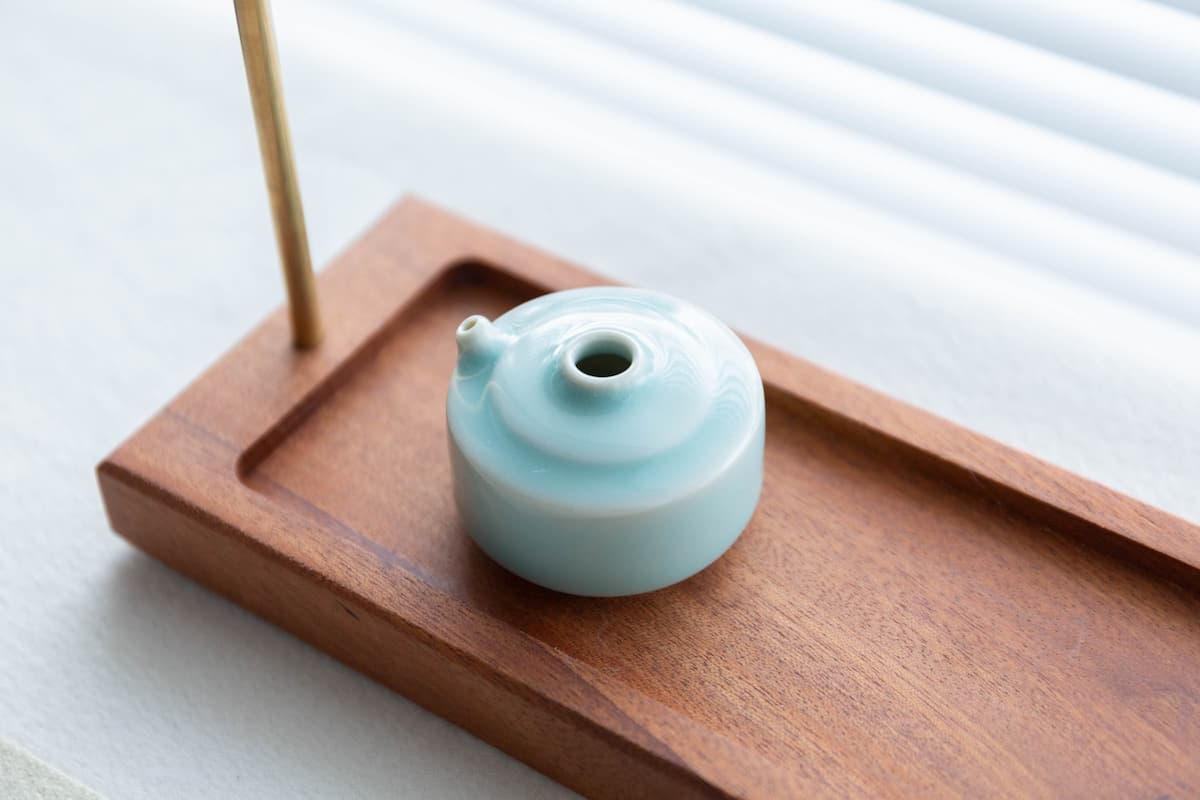
This is a Yandi, or water dropper.
You control the flow by placing your finger over the top hole, allowing you to add water one drop at a time. This prevents you from accidentally adding too much.
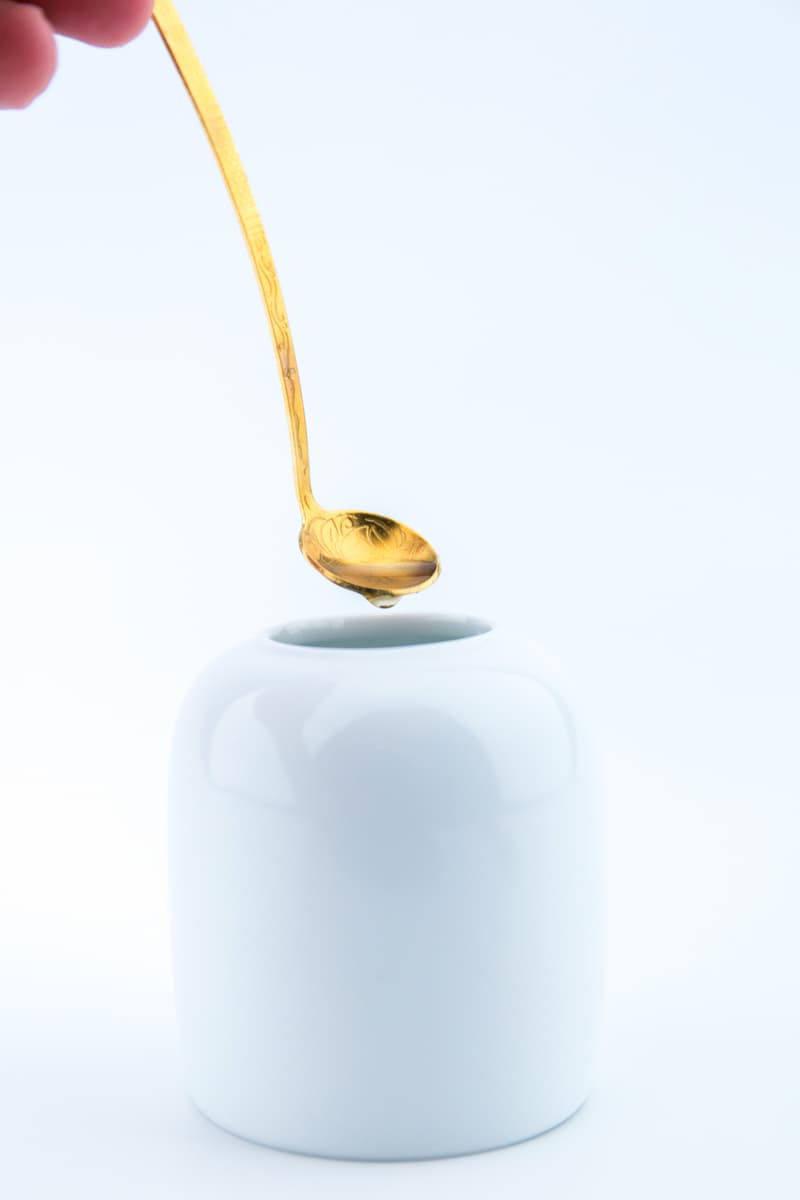
A Shuiyu (water pot) and its spoon.
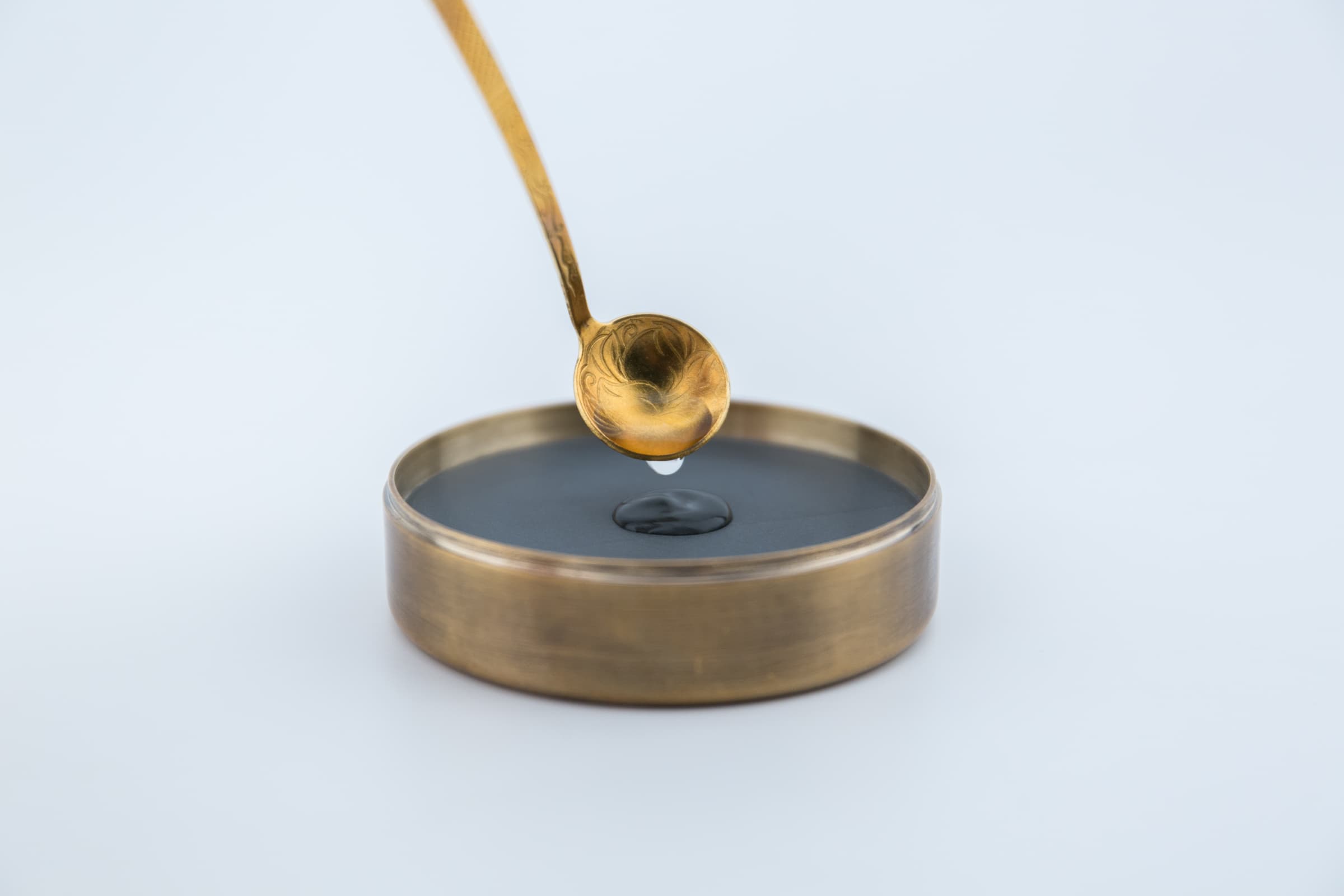
Using the spoon to add water from the pot to the inkstone, diluting the ink.
Another trick: if your bottled ink seems too thin right from the start, pour some into an open inkstone or a small dish. Exposing it to the air will help some of the water evaporate, naturally thickening the ink over time.
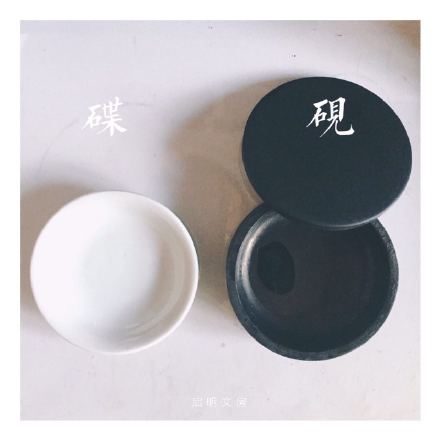
An open dish and an inkstone both help ink thicken by increasing air exposure
3. Control Your Speed: How Fast You Write
The speed of your brushstrokes also affects ink bleeding.
- Fast Strokes: Moving your brush quickly reduces the time the ink has to soak into the paper, resulting in less bleeding. It can even create a beautiful “dry brush” (枯笔) effect where the paper’s texture shows through.
- Slow Strokes: Moving slowly gives the ink more time to penetrate the paper, which can increase bleeding.
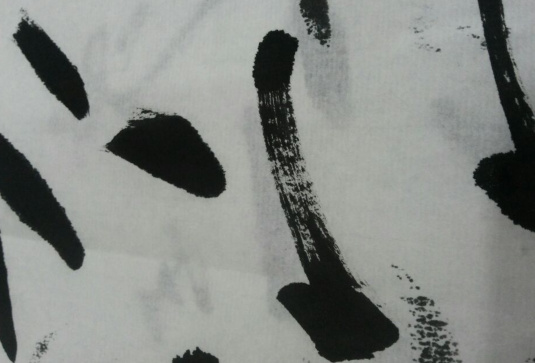
This photo, provided by a friend, shows the effect of writing quickly with thick ink. Notice how it doesn’t bleed and even creates a “dry brush” texture.
4. Don’t Overload Your Brush: The Right Amount of Ink
If you load your brush with too much ink, it’s bound to bleed when you put it on the paper. Try dipping your brush less deeply into the ink.
Another professional tip: after writing a character, you can gently lay a piece of scrap paper or another absorbent material over it to blot up any excess ink. This will stop the bleeding in its tracks.

This photo I took shows Master Sun Tianyue at work. Notice he is holding a piece of blotting paper in his left hand, ready to use. (A thick, high-quality napkin works too!)
Summary: How to Choose the Right Xuan Paper to Prevent Ink Bleeding
So, with all that said, choosing the right paper comes down to three key factors:
1. The Size of Your Characters
Generally, the smaller the characters, the finer and less absorbent your paper should be. If you’re practicing small regular script (小楷), choose a paper with a smooth, delicate surface. Conversely, for large, powerful styles like large cursive script (大草) or placard script (榜书), you’ll want a slightly rawer paper to achieve rich variations in ink tone.
It’s all about matching the paper to the script. Using a raw, coarse paper for small script would be a nightmare—you’d spend all your energy just trying to control the ink. It’s like using the wrong tool for the job; different scripts require different papers to truly shine (相得益彰).
A common mistake for beginners is to start practicing on raw Xuan paper. For daily practice, a standard, fully sized or semi-sized Mao Bian Paper is a much better and more affordable choice. It absorbs just enough ink without bleeding uncontrollably. If you’re worried about any bleeding at all, just go with fully sized paper.
2. The Speed of Your Script (Slow vs. Fast)
For slow, deliberate scripts like Seal (篆书), Clerical (隶书), and Regular (楷书), a less absorbent (more sized) paper is best. If the paper is too raw and your strokes are slow, the ink will bleed heavily. The one exception is small regular script, which requires paper that is both fine and fully sized.
For faster scripts like Running (行书) and Cursive (草书), you have more flexibility. A rougher paper combined with fast strokes can create a “flying white” (飞白) effect, giving your work an ancient, powerful look. A smoother paper will result in a more elegant and refined appearance. It all depends on your personal taste.
3. Composition and Ink Effects (Advanced)
For beginners, you really only need to worry about the first two points: character size and writing speed. Advanced techniques involving composition and special ink effects (like “ink wash” or 涨墨) are for experienced calligraphers, who likely already know exactly which paper they need.
Qi Ming Wen Fang offers a wide variety of papers to choose from. If you need fully sized paper, try our machine-made or Cicada Wing Mao Bian Paper. For a semi-sized option, our antique-style machine-made paper or daily practice paper are excellent choices.
I hope this analysis of ink bleeding and my advice on paper selection have been helpful. While this guide may not cover everything, I trust it will give you a much better understanding of how to solve this common problem.
If you found this article useful, please feel free to share it with other friends who love Chinese calligraphy

